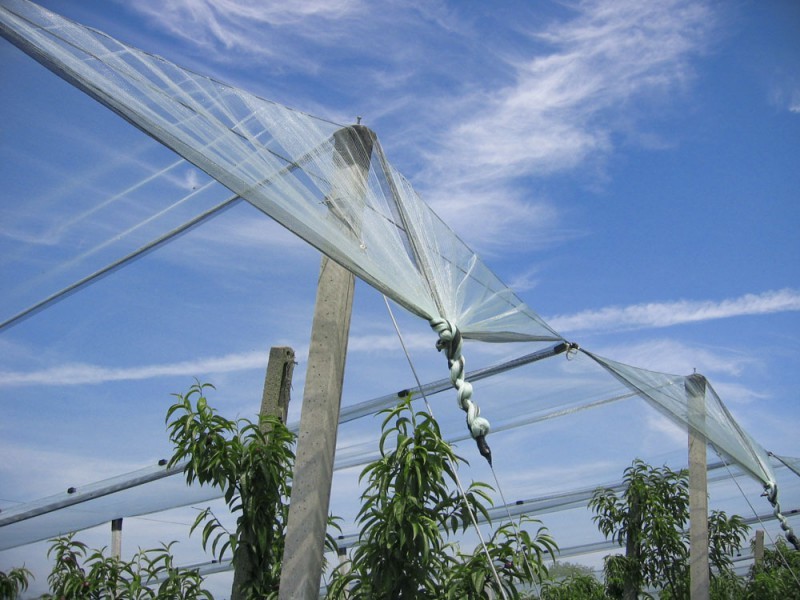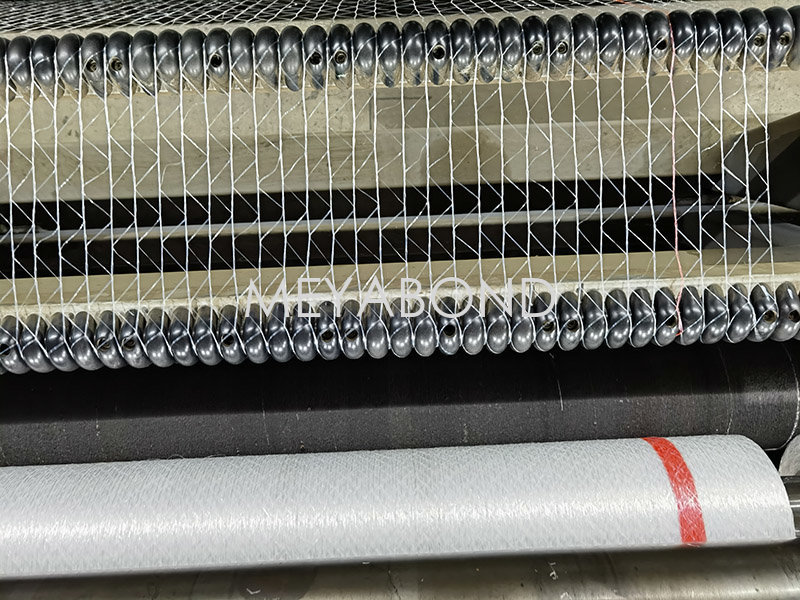Protect Your Crops: The Advantages of Using Anti Hail Nets
Protect Your Crops: The Advantages of Using Anti Hail Nets
In the agricultural world, protecting crops from unpredictable weather events is a top priority for farmers. One of the most significant threats to crop yield is hail, which can cause devastating damage in mere minutes. To combat this problem, many farmers are turning to anti hail nets as a reliable solution. This article delves into the numerous advantages of using anti hail nets, how they work, and why they are essential for modern agriculture.
The Importance of Crop Protection in Modern Agriculture
As climate change leads to increasingly erratic weather patterns, farmers face challenges that threaten their livelihoods. Hailstorms are particularly damaging, often leading to substantial financial losses. It's crucial for farmers to explore all available options to safeguard their crops. Anti hail nets have emerged as an effective method for crop protection, offering a range of benefits that make them an attractive investment.
Understanding Hail and Its Impact on Agriculture
Hail is a form of precipitation that consists of frozen water droplets. When these droplets collide with each other in thunderstorms, they can grow larger and fall to the ground at high speeds. The impact of hailstones can be catastrophic for crops, causing physical damage, bruising, and even complete destruction. The financial implications of such damage can be staggering, prompting farmers to seek protective measures.
Types of Crops Affected by Hail Damage
Almost all agricultural crops can suffer from hail damage, but some are particularly vulnerable. Fruits, vegetables, and grains, such as:
- Apples
- Grapes
- Tomatoes
- Wheat
These crops may sustain severe damage from hail, affecting both quality and yield. Therefore, implementing protective measures like anti hail nets can save farmers from considerable losses.
What Are Anti Hail Nets?
Anti hail nets are protective coverings made from durable materials designed to shield crops from hail damage. These nets are installed above the crops and serve as a barrier, preventing hailstones from reaching the plants. Depending on the design and material, anti hail nets can also provide additional benefits, such as shading the crops and reducing wind exposure.
How Anti Hail Nets Work
The primary function of anti hail nets is to intercept falling hailstones before they can strike the crops. When hailstones hit the net, their momentum is absorbed, minimizing the impact on the plants below. The mesh structure of the net ensures that water and sunlight can still reach the crops, allowing for healthy growth. In addition to protecting against hail, these nets can also reduce the effects of strong winds and heavy rain, providing an all-around protective layer for vulnerable crops.
Material and Design Variations of Anti Hail Nets
Anti hail nets come in various materials, including:
- Polyethylene
- Polypropylene
- Nylon
Each material has its specific advantages, such as UV resistance and durability. The choice of net design also impacts performance. Options include:
- Flat nets
- Dome-shaped nets
- Arch-shaped nets
Farmers should consider the specific needs of their crops and local weather conditions when selecting anti hail nets.
The Advantages of Using Anti Hail Nets
Investing in anti hail nets comes with numerous advantages that can significantly impact a farmer’s bottom line. Below, we outline the key benefits of implementing this protective measure.
1. Comprehensive Crop Protection
By using anti hail nets, farmers can ensure that their crops are safeguarded against hail damage. This protection not only preserves the crop's physical structure but also minimizes the risk of secondary issues such as disease and pest infestations that can arise from damaged plants.
2. Increased Yield and Quality
Crops that are protected from hail are more likely to grow to their full potential. Farmers can expect higher yields and better quality produce, which can lead to increased sales and profitability. The investment in anti hail nets often pays for itself through the enhanced performance of the crops.
3. Cost-Effective Agricultural Solution
While the initial investment in anti hail nets may seem significant, the long-term savings can be substantial. By preventing hail damage, farmers can avoid costly losses and reduce their reliance on crop insurance. In many cases, the netting can last for several years, making it a cost-effective solution over time.
4. Environmental Benefits
Anti hail nets can contribute to sustainable farming practices. By protecting crops without the need for chemical treatments, farmers can maintain a healthier ecosystem. Additionally, nets can help regulate microclimates, promoting better growth conditions for the crops underneath.
5. Versatility in Application
Anti hail nets are versatile and can be used in various farming scenarios. Whether it's fruit orchards, vegetable fields, or vineyards, these nets can be tailored to suit different crops and growing conditions. This adaptability makes them a valuable tool for diverse farming operations.
Installation of Anti Hail Nets: A Step-by-Step Guide
Installing anti hail nets might seem daunting, but with proper planning and execution, it can be a straightforward process. Here’s a step-by-step guide for farmers looking to install these protective nets.
1. Assess Your Crop Needs
Before installation, evaluate the specific crops you need to protect and assess your local weather conditions. This assessment will help you determine the type of netting best suited for your needs.
2. Choose the Right Material and Design
Select a suitable material and design for your anti hail nets. Consider factors like UV resistance, mesh size, and durability. Consult with suppliers to find the best options for your specific crops.
3. Measure Your Area
Accurate measurements of the area to be covered are essential. This will help you determine how much netting you need and ensure that you have enough to adequately protect your crops.
4. Set Up Support Structures
Depending on the design of the nets you choose, you may need to install support structures such as poles or frames. Ensure that these supports are sturdy enough to withstand strong winds and weather conditions.
5. Install the Nets
Carefully install the nets over the support structures, ensuring that they are taut and secure. This will prevent the nets from sagging or collapsing under the weight of hailstones.
6. Regular Maintenance
Inspect the nets regularly for wear and tear. Repair any damage promptly to maintain their effectiveness. Ensuring that the nets remain in good condition is crucial for ongoing crop protection.
Maintenance Tips for Anti Hail Nets
To maximize the lifespan and effectiveness of your anti hail nets, regular maintenance is essential. Here are some tips to keep your nets in optimal condition.
1. Clean the Nets
Debris, dirt, and organic matter can accumulate on the nets over time. Regularly clean the nets to ensure that water and sunlight can penetrate effectively.
2. Check for Damage
Inspect the nets for any signs of damage, such as tears or rips. Promptly repairing these issues can prevent further damage and ensure continuous protection for your crops.
3. Monitor Support Structures
Ensure that the support structures remain stable and secure. Any compromised supports should be addressed immediately to avoid catastrophic failures during storms.
Frequently Asked Questions (FAQs)
1. How long do anti hail nets last?
Typically, anti hail nets can last between 5 to 10 years, depending on the material and environmental conditions.
2. Are anti hail nets effective against other weather phenomena?
Yes, anti hail nets can also provide protection against strong winds, heavy rain, and even excessive sunlight, enhancing overall crop resilience.
3. Can I install anti hail nets myself?
While it is possible to install the nets yourself, seeking professional help may ensure a more secure and effective installation.
4. Do anti hail nets require maintenance?
Yes, regular maintenance is essential. Cleaning and inspecting the nets will help prolong their lifespan and effectiveness.
5. What crops benefit the most from anti hail nets?
Fruits like apples and grapes, as well as vegetables such as tomatoes, benefit significantly from anti hail nets due to their vulnerability to hail damage.
Conclusion
In an era of unpredictable weather, protecting crops from hail damage is more important than ever. Anti hail nets offer a practical and effective solution to safeguard valuable agricultural investments. By preventing hail damage, increasing yields, and promoting sustainable farming practices, these nets prove to be a wise investment for farmers across the globe. As you consider your options for crop protection, investing in anti hail nets can provide peace of mind and ensure the longevity and health of your crops.
Key words:
Related News
CONTACT US
Email: sales8@meyabond.com
Tel: +8618911966213
No.3 Yard, ZhongHe Road, 100071,FengTai District, Beijing, China
Email: sales6@meyabond.com
Tel: +8618911963856
No.3 Yard, ZhongHe Road, 100071,FengTai District, Beijing, China
















